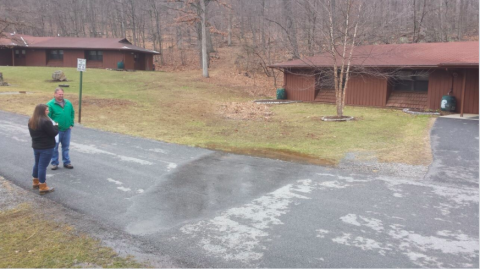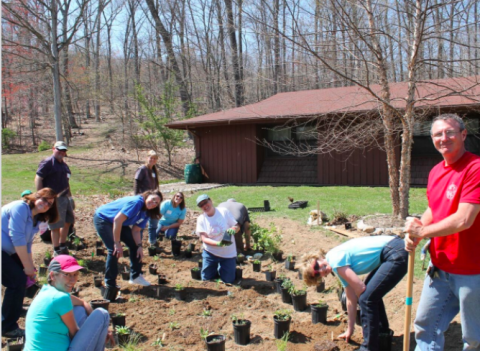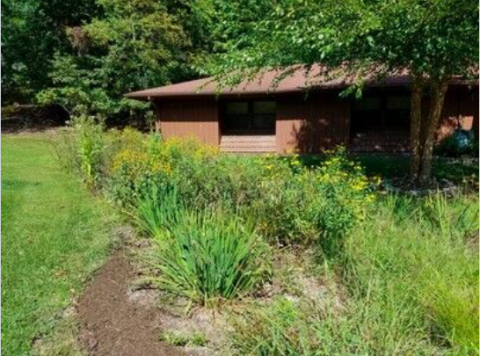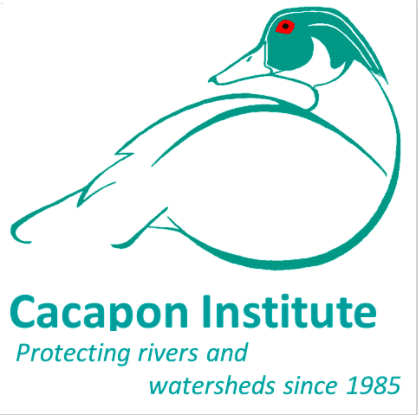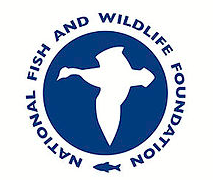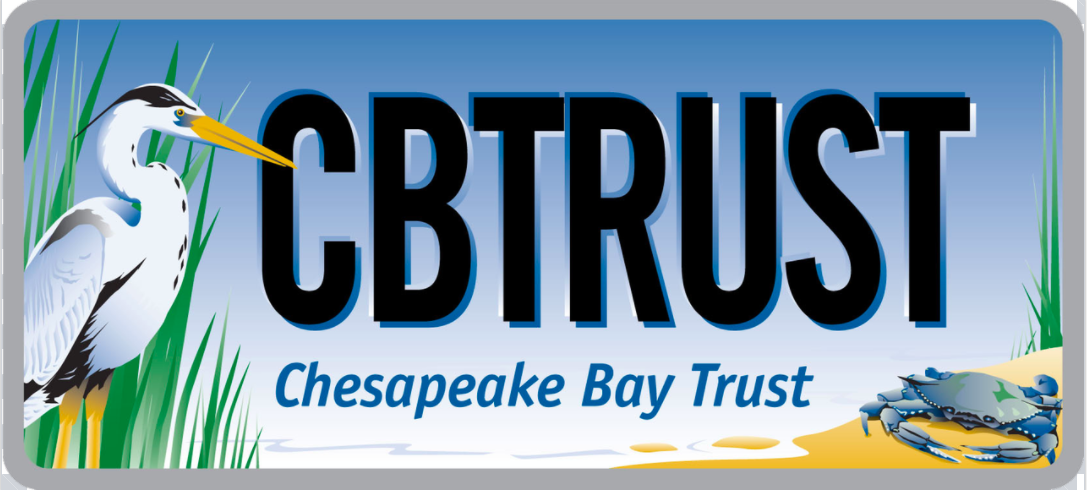Raining Classrooms at the Claud E. Kitchens Outdoor School

Parts of the Chesapeake Bay watershed contain a high percentage of impervious cover – paved or other hard surfaces such as roofs and roadways that prevent rain water from being absorbed into the ground. Instead, water runs along these surfaces, collecting trash and substances such as motor oil, lawn fertilizers, and pesticides. This polluted stormwater flows into streams and rivers, where it threatens aquatic ecosystems and public health.
Effective stormwater management, on the other hand, creates safe paths for polluted runoff to be captured and filtered through the ground before it reaches waterways. This helps keep the environment clean and our communities healthy!
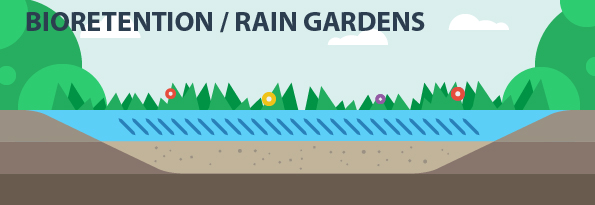
Project location: Clear Spring, MD
Problem: Water runoff from storm events collected in pools on the road and driveway in front of the Claud E. Kitchens Outdoor School, causing flooding in the summer and dangerous icy conditions in the winter. A $10,000 under-road culvert was proposed as a solution, but was beyond the school budget.
Solution: Through a $5,000 grant from the National Fish & Wildlife Foundation and CB Trust, 24 teachers were transported to the school site for training events on the importance of addressing stormwater before it reaches nearby waterways. A rain garden installed in front of the school now diverts runoff from 90% of all rain events. Additionally, the rain garden serves as a teaching tool for many of the school’s outdoor education programs, which are attended by children from Washington County Public Schools.
Cost: $5,000

